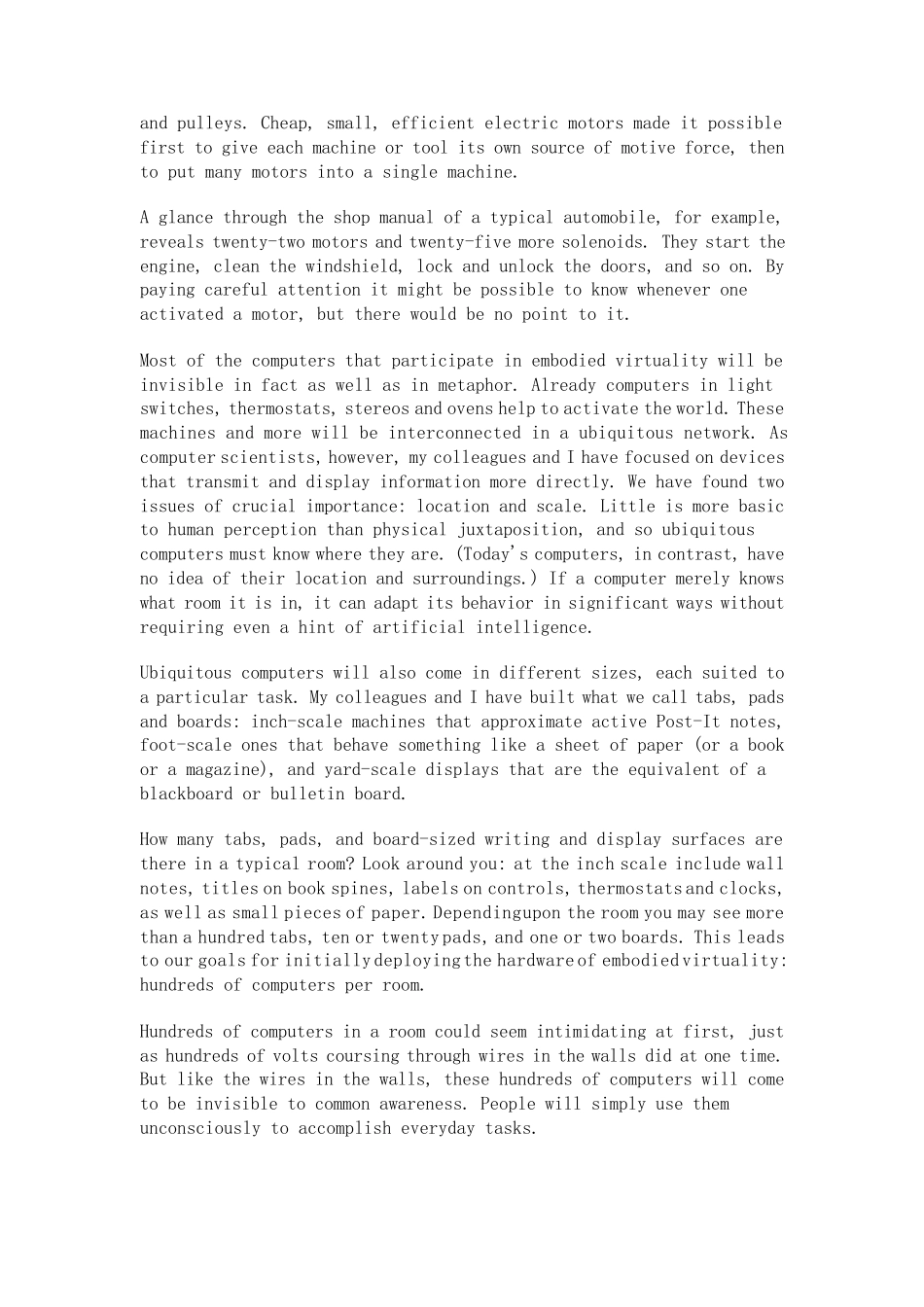The Computer for the 21st Century Mark Weiser The most profound technologies are those that disappear. They weave themselves into the fabric of everyday life until they are indistinguishable from it. Consider writing, perhaps the first information technology: The ability to capture a symbolic representation of spoken language for long-term storage freed information from the limits of individual memory. Today this technology is ubiquitous in industrialized countries. Not only do books, magazines and newspapers convey written information, but so do street signs, billboards, shop signs and even graffiti. Candy wrappers are covered in writing. The constant background presence of these products of "literacy technology" does not require active attention, but the information to be conveyed is ready for use at a glance. It is difficult to imagine modern life otherwise. Silicon-based information technology, in contrast, is far from having become part of the environment. More than 50 million personal computers have been sold, and nonetheless the computer remains largely in a world of its own. It is approachable only through complex jargon that has nothing to do with the tasks for which which people actually use computers. The state of the art is perhaps analogous to the period when scribes had to know as much about making ink or baking clay as they did about writing. The arcane aura that surrounds personal computers is not just a "user interface" problem. My colleagues and I at PARC think that the idea of a "personal" computer itself is misplaced, and that the vision of laptop machines, dynabooks and "knowledge navigators" is only a transitional step toward achieving the real potential of information technol...


